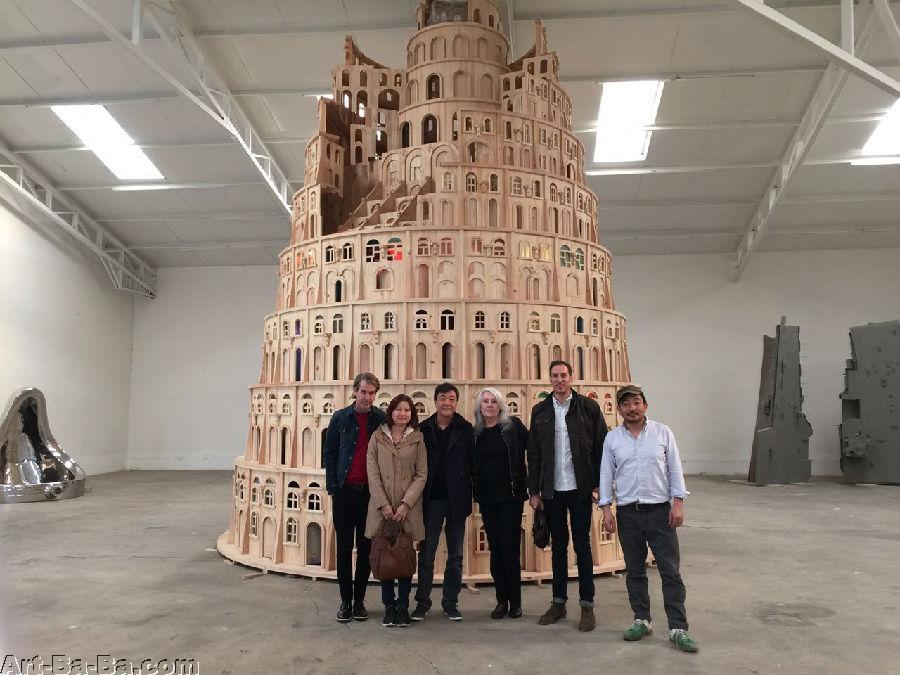
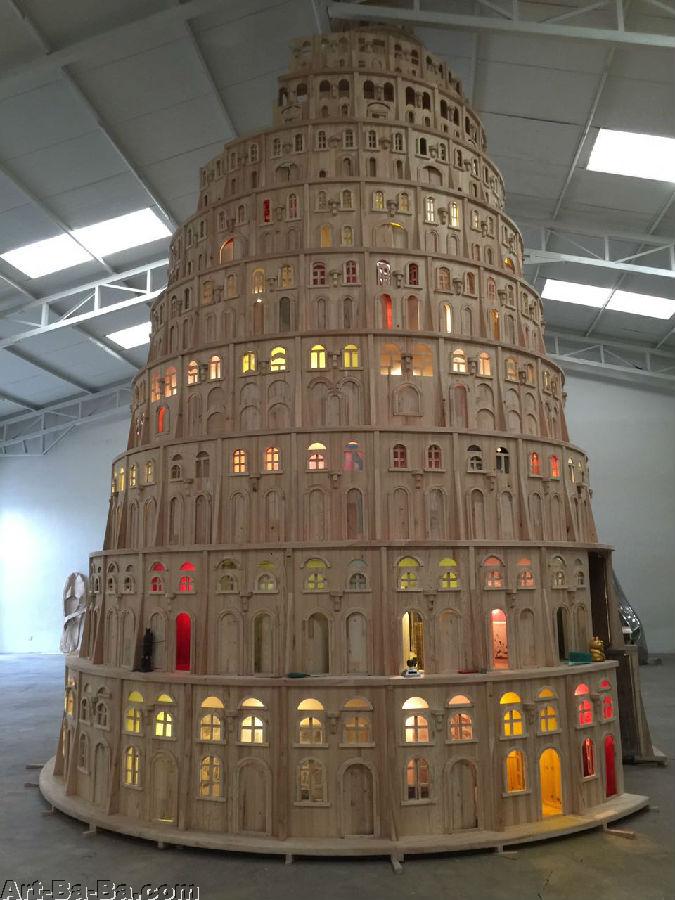
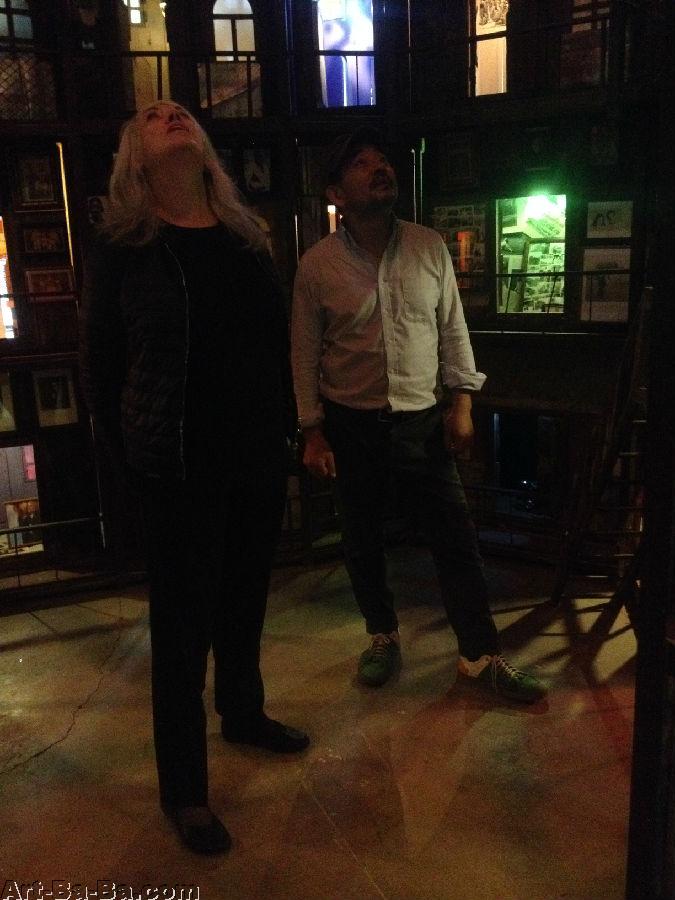
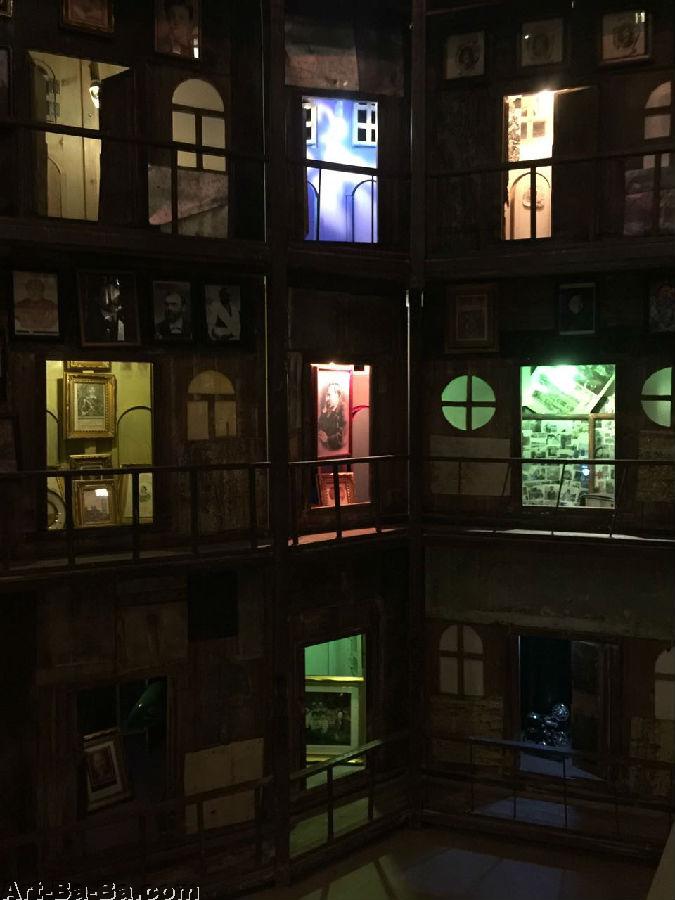
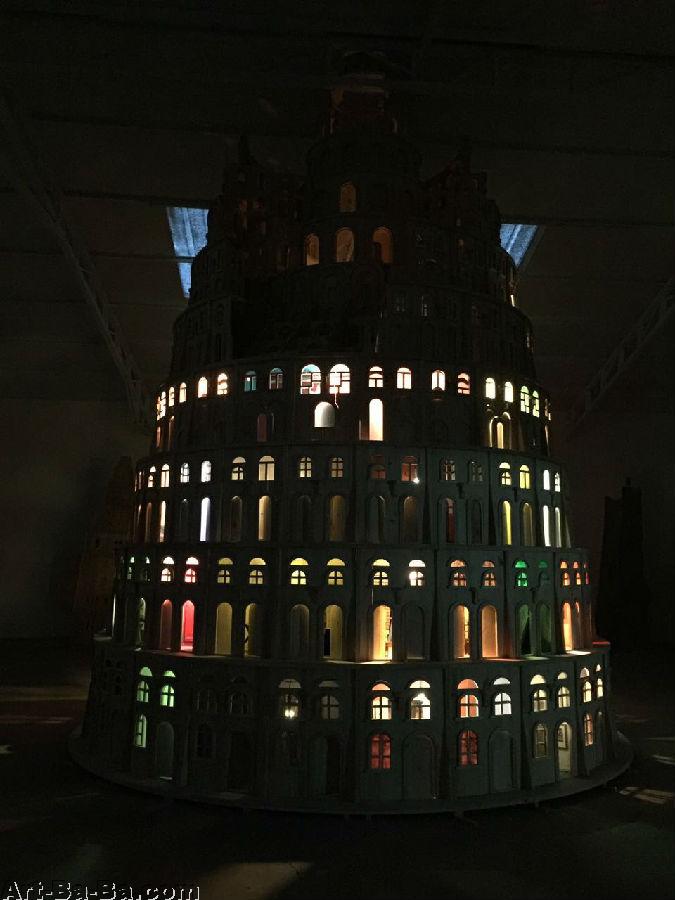
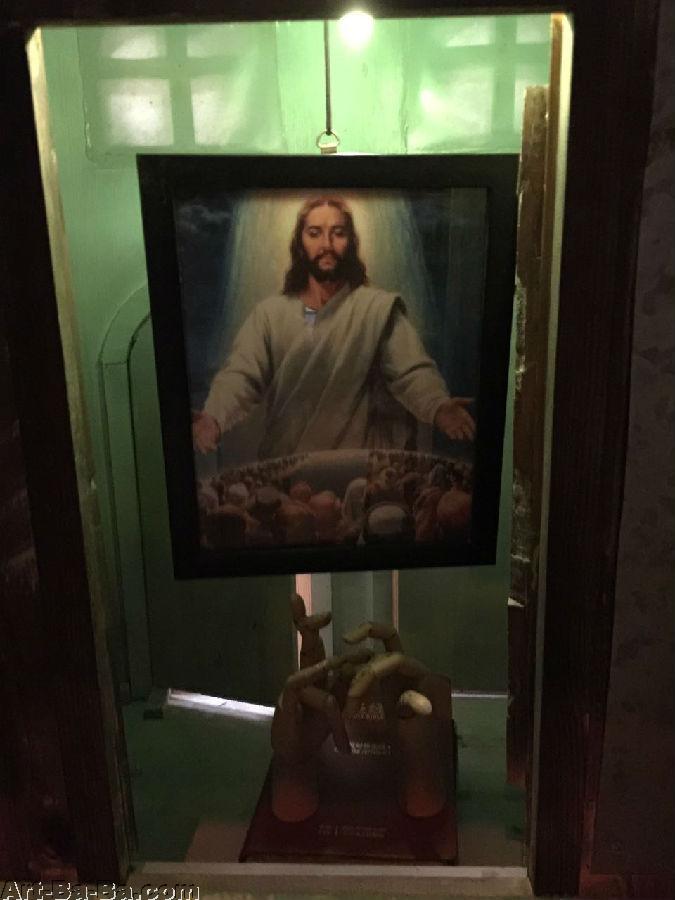
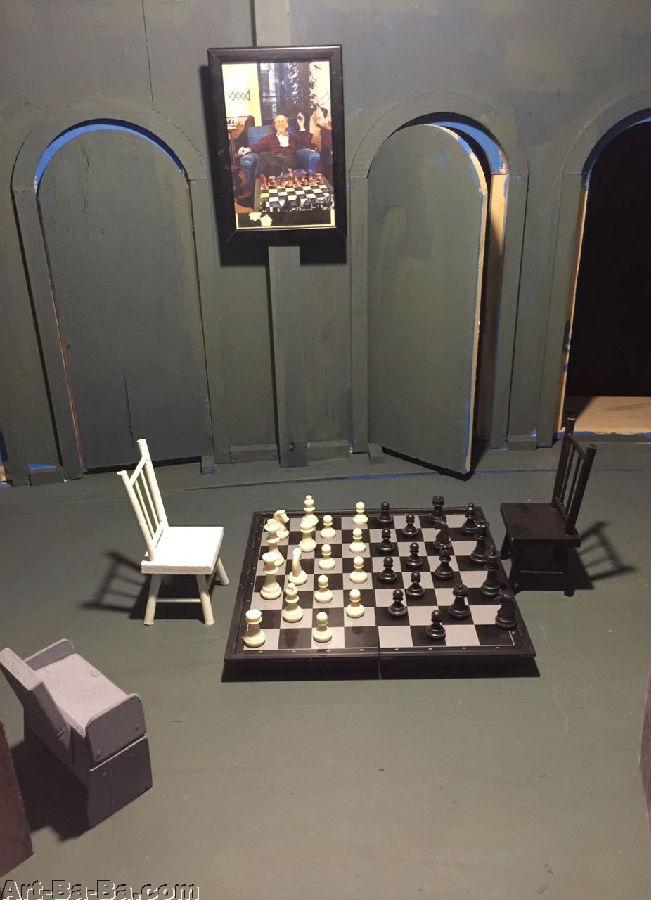
My Tower of Babel
By Shaheen Merali
PieterBruegel the Elder (c.1525-1569) is regarded as one of the greatestgenre-painters of the Northern Renaissance. In many indexes for the finestpaintings between 800-1800 AD, feature seven[1]key oil paintings by Bruegel the Elder signifying the impact of his work topre-modern art and in the genre of painting. Oneof the seven paintings is the Tower ofBabel (1563) painted at the early age of 38. Tower of Babel is part of the collectionat the Kunsthistorisches Museum, Vienna, and said tobe the second of three versions, which he painted of this subject, they all differ in scale and composition.
This second adaptation is a composition that differsfrom the rest by the inclusion of an allegoric “scene of King Nimrod and hisretinue appearing before the genuflecting crowd of workmen. This event is notmentioned in the Bible but was suggested in Flavius Josephus' Antiquities ofthe Jews. It was important to Bruegel as underlining the sin of the King'spride and overbearing which the picture is supposed to highlight.”[2]
Flavius Josephus' Antiquities of the Jews provided avaluable circumstantial material to historians and artists wishing tounderstand 1st-century AD Judaism and the early Christian period. It is ofteninferred by many scholars as in the Bible “much is left unsaid. In this regard, it resembles other biblicalnarratives, which are often rather spare in narrative detail. The tower ofBabel story is replete with gaps—notable lacks in important information. Itdoes not indicate—at least not clearly—what is wrong with this city and towerthat God should be bothered by it in the first place.”[3]
The fact that Genesis 11: 1-9 version has no mentionof King Nimrod or his retinue as the people who are responsible in building"a tower whose top may reach unto Heaven” provides in Nimrod a pivotalfigure to place God’s punishment on his ambition to construct "a towerwhose top may reach unto Heaven" and a symbol which would act to keep themunited with pride.
It is important to note here the further inclusions tomany Biblical narratives and the difference it makes have always provided for amore comprehensive understanding of many of the narratives in the Bible. In2016, the Beijing based artist JJ Xi, has created his own Tower of Babel,constructed completely out of wood and over 7 meters high and 5 meters wide;his Tower of Babel, has 82 rooms occupied by a range of distinguishingpersonalities. As such he becomes part of this lineage of artists who workwithin the narrative void of the Tower of Babel that allows a different set of charactersto inhabit the structure. A tradition that started with Bruegel the Elder whichcontinues in JJ Xi’s contemporary symbolic representation of the Tower ofBabel.
JJXi’s modern interpretation bymultiplying the occupation with an array of scientists, philosophers, artists,inventors and politicians from a global domain provides a similar reason toBreugal the Elders inclusion of King Nimrod to posit a personal interpretation.JJ Xi’s Tower of Babel is partially acounternarrativeto the originalBiblical argument that confusion would reign after the dismissal of a singularlanguage. JJXi’s Tower of Babel is in fact amultiplication of languages within the said structure, which organises differenceas historic progress.
JJXi’sTower of Babel is a flourishing gathering, of ‘celebrities’ in the towers ruins, eachof the 82 rooms dedicated to singularlifelong explorations. A communal place, similar to a museum, a university, avast laboratory or a hall of fame, herein variety in fields of study andlanguage, from a myriad of places and times consolidates our modern world as aglobal bank devoted to knowledge.
JJXi’sTower of Babel primarily suggests an enriched place secured from scientific deliberationand political thought, the tower presided by its most recognisable andinfluential figures including Bob Marley, Pablo Picasso and Marie Curie. Globalicons whose motivations have led to the existing unprecedented occupation ofearth’s resources and a contemporary culture built from their lives that act ascommon milestones.
JJXi’sTower of Babel provides a different echo to the Biblical altercation of the role of multiplelanguages which were introduced to ‘confuse’. In suggesting that the veryimportance of any mythical placebo including the Tower of Babel in modern society becomes a public place wheresociety honours and celebrates by expressing pride of its metropolitanelites.
The growing global proliferation of virtual and realplaces, increasingly built in major capitals of the world devoted to knowledgeseem to be dedicated to the multiplication of languages that have paved the wayto the means of production of knowledge. Hundreds of objects and treatise inmuseums and websites instruct us of a global modernity brokered by powerful individuals.A linear unbroken history that is based on inspired invention followed bynecessary development; staging such advancement is part of educating the worldand its citizens even if in reality we are beginning to conclude its realexpense.
The planet ability to survive this economic andpolitical evolution where nearlyeverything had remained subservient to mankind’s needs and demand, the entirety valuable as long as it served our needs anddesires is no longer sustainable. In many ways one can conclude that JJ Xi’sTower of Babel with its 82 rooms that like incubate 82 key historic figures representKing Nimrod, amixture of wisdom and self-assured ability to ‘ascend on it into heaven’ to soarto a delusional self-sufficiency based ultimately on denial.
JJXi’s Tower of Babel is a confounding discourse,both a monument to a monument as well as to monumentality that serves our“mystical pendant to the Enlightenment”[4].
On our first reading the spectrum of differentlanguages in JJXi’s Tower of Babel infuses a sense ofourselves as global citizens but on a deeper level diffuses humankind’s agencytowards survival, for this Tower of Babelis a supernova whose brightness suggests a catastrophic explosion that couldeject most of its mass.
For in the midst of a central locus of its ruins, therelation between such great luminaries that provides its internal coordinates,has not guided us from helplessly spinning off course to a path to heaven.
JJXi’s Tower of Babel is both a temple toknowledge whilst affirming the establishment of cult building in Western citiesthat proclaim their uniqueness that couple intellect and spirit in their potentfortifications. JJ Xi’s Tower of Babel remainsan open proposal as to how we currently feel united in historical forums andthe recycling of modern ruins, which intentionally fill the ideological andcultural positions as tributes, of lives dedicated to the service of humankind.Here the politics of globalisation in its suppression of difference is broughtinto closer inspection to the Judaic and Christian allegorical latent dangersin ascending heaven.
The seminal version of the Tower of Babel that allowedBruegelthe Elder to be decisively influenced by Flavius Josephus reimagination, by inserting King Nimrod as the primeprotagonist is here again followed by a contemporary version of JJ Xi’s Tower of Babel. A detour through whichthe Tower of Babel once again crystallises a site to question important notionsfor localities, differences and other dramatic events including the globalcivic and the recipiency of celestial challenges. JJ Xi’s Tower of Babel is an ultimate border between heaven and earth,between mankind and divine order, herein moral terms between destruction andconstruction and of local and the international are productively exploited totalk about power and human activities.
This Biblical emblematic wonder with its vacuum inmeaning has allowed a myriad of artists and writers to use its symbolical valueto inscribe into it productive ways we can view differences and space and theconfigurations of power. JJ Xi’s alignment in his Tower of Babel of the intellectual and philosophical next to thepolitical and scientific can be described a politics of internationalism withinthe confines of an aggressive planetary obsession with progress and abuse ofpower. For this internationalism of heroes and heroines, of the powerful whoare used to stage a mythical belonging; JJ Xi’s restages a larger maneuver fromits intellectual body and recognised legacy in one unified space of the ruinsof a Biblical tower allows a different existence of foolish belief indeliberate lies.
[1] The seven works are Netherlandish Proverbs (1559), Mad Meg (Dulle Griet) (1562), Tower of Babel (1563), Hunters in the Snow (1565), The Census of Bethlehem (1566), Massacre of the Innocents (1564) Parable of the Blind (1568) and Peasant Wedding (1568).
[2]http://www.visual-arts-cork.com/famous-paintings/tower-of-babel.htm
[3] Brent A. Strawn, Holes in the Tower of Babel
http://global.oup.com/obso/focus/focus_on_towerbabel/
[4]AntjeGraevenitz, ‘ Hutten und Temple : Zur Mission der Selbstbestimmung’, in HaraldSzeeman (ed.) Monte Verita: Berg der Warheit,Milan, Electra, 1980,p.91; quoted in Volker M.Welter, Biopolis : Patrick Geddes and the City of Life,Cambridge, MA,MIT Press, 2002,p.146.